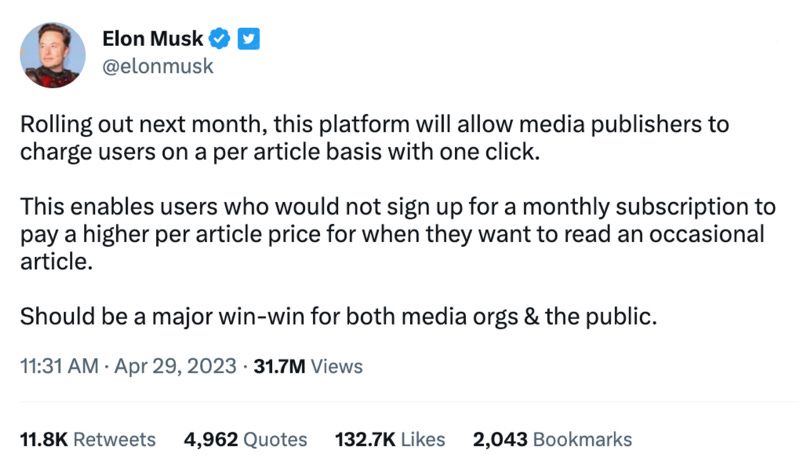In Why Publishers Don’t Sell Individual Articles, we saw how readers want à la carte (buy individual articles) but publishers offer only buffet (all-you-can-eat subscriptions). (While this post can be read independently, it will make more sense after reading the previous post.)
Of late, some publishers are not even offering one-month subscriptions. Either their minimum period for subscription has bumped up to a quarter (or half year or full year or even two years) OR their monthly subscription compulsorily auto-renews.
This strongly resonates with the prediction I’d made in How Merchants Will Fight Subscription Dodgers that merchants might retreat from Subscription Economy and go back to the good old Upfront Payment Economy.
I attribute the volte-face to the following reasons:
- Subscription order processing costs have spiked after RBI Reg Emandate came into effect in India from 1 October 2021.
- While it will be harder to sell an annual subscription than a monthly subscription, I reckon that the effort to do so will not be twelve times. In other words, CAC3 > CAC2 but << 12 x CAC2 – let’s say it’s 3 x CAC2. As defined in my previous post, CAC1, CAC2 and CAC3 are respectively the cost of acquisition to the publisher of customer for individual article, monthly subscription and annual subscription; and LTV1, LTV2 and LTV3 are respectively the lifetime value to the publisher of customer who buys individual article, monthly subscription and annual subscription.
- The LTV for annual subscription (LTV3) is $100. Assuming that the publisher is ethical and does not set subscription traps described in my previous post to goose up monthly subscription revenues, the LTV for monthly subscription (LTV2) is $10. Therefore the difference in the LTVs between annual and monthly subscription is 10X.
Therefore, CAC for annual subscription is 3X that of CAC for monthly subscription but LTV is 10X. So, it’s a no-brainer that publishers would gun for annual rather than monthly subscriptions (Of course, this strategy will only work within the target audience that has adequate purchasing power to buy an annual subscription costing 10X.)
Maybe not?
It's unlikely that LTV > 3*CAC with a single month sub, so forcing autorenew is actually a *good* business practice for brand??— Ketharaman Swaminathan (@s_ketharaman) January 16, 2023
As we’ve seen in my previous post, the pay per article model has swung from one end of the pendulum to the other over the years.
What is its future outlook?
As Neils Bohr / Yogi Berra said, “It’s difficult to make predictions, especially about the future” but I’m willing to go out on a limb and assert that we’ll not see a proliferation of per-article model unless there are disruptive changes in the CAC-LTV dynamics of the media business.
What’re the chances of that happening?
Every sale has a cost, in terms of distribution and order processing.
 But what if publishers are able to externalize those costs?
But what if publishers are able to externalize those costs?
Enter Musk Twitter.
It has always been de rigueur for journalists to post links of their articles on Twitter. If you click the link, you can access the article without encountering a paywall.
Ditto for links posted by subscribers. In the case of Wall Street Journal and ET Prime, these links provide paywall-free access to articles. (The WSJ link works as advertised whereas the ET Prime “Gift This Story” link is buggy.)
This is called “Social Media Backdoor”.
PSA: URL tracking codes are annoying but, before deleting them indiscriminately, remember that some of them provide free access to premium content e.g. WSJ Social Backdoor Link.
— Ketharaman Swaminathan (@s_ketharaman) May 16, 2018
In this manner, Twitter provides organic distribution of articles. As a result, the distribution cost component of CAC is zero for the publisher (barring the revenue lost due to 10-20 free backdoor links).
Then there are reports that Elon Musk is planning to launch a micropayments service called Twitter Money. If it handles the entire processing of the payment, then the order processing cost component of CAC will get close to zero for the publisher.
In short, CAC for an individual article will trend to zero. In that case, publishers can fulfill the customer’s price point of 10 cents per article while still conforming with the cardinal rule that LTV must exceed 3 x CAC.
If that happens, we can expect the pay-per-article model to take off.



